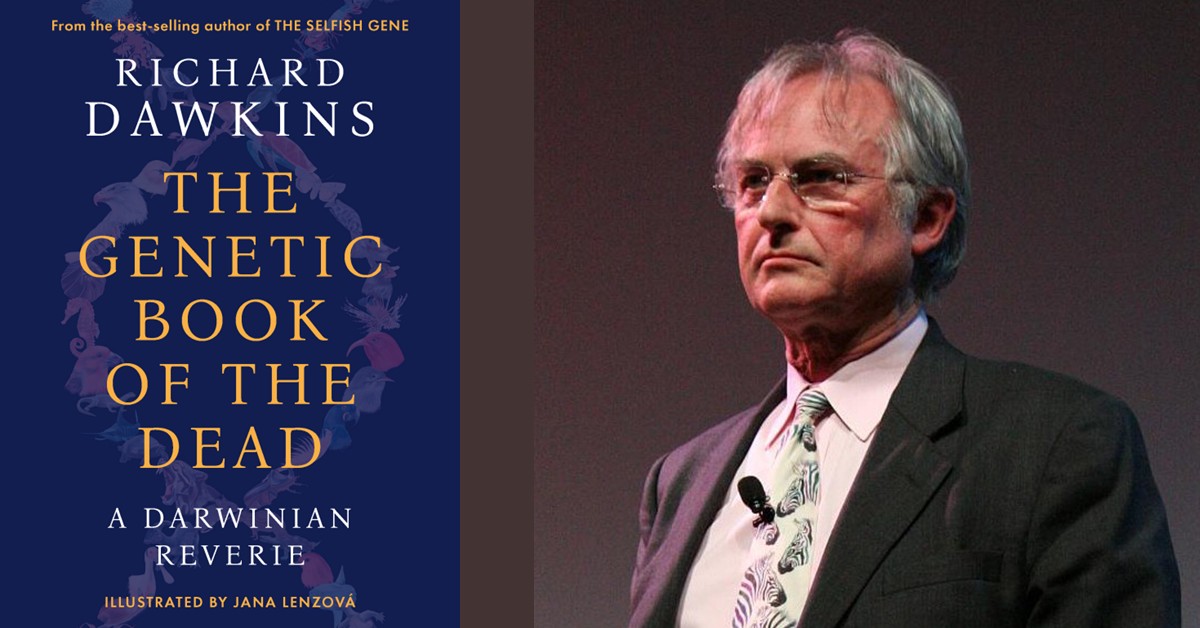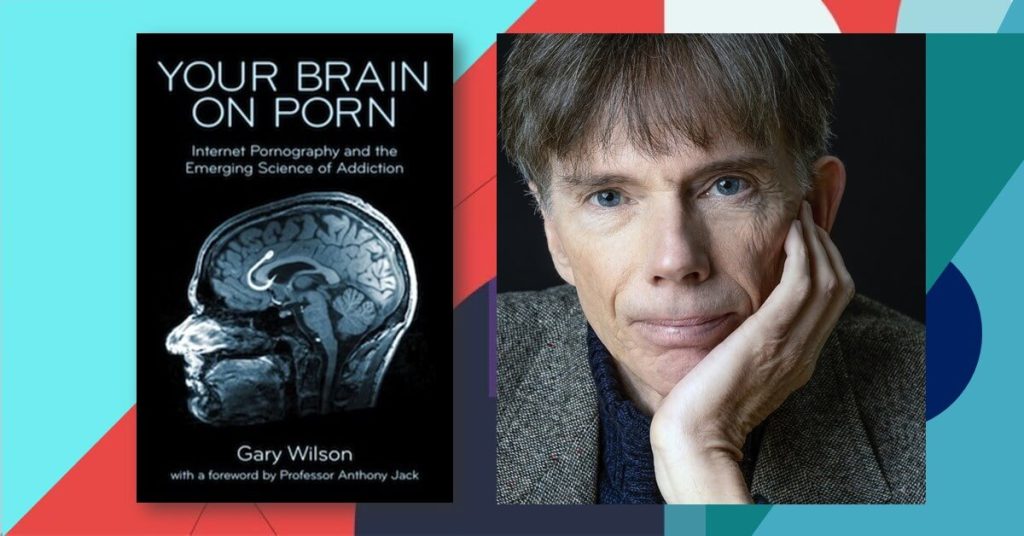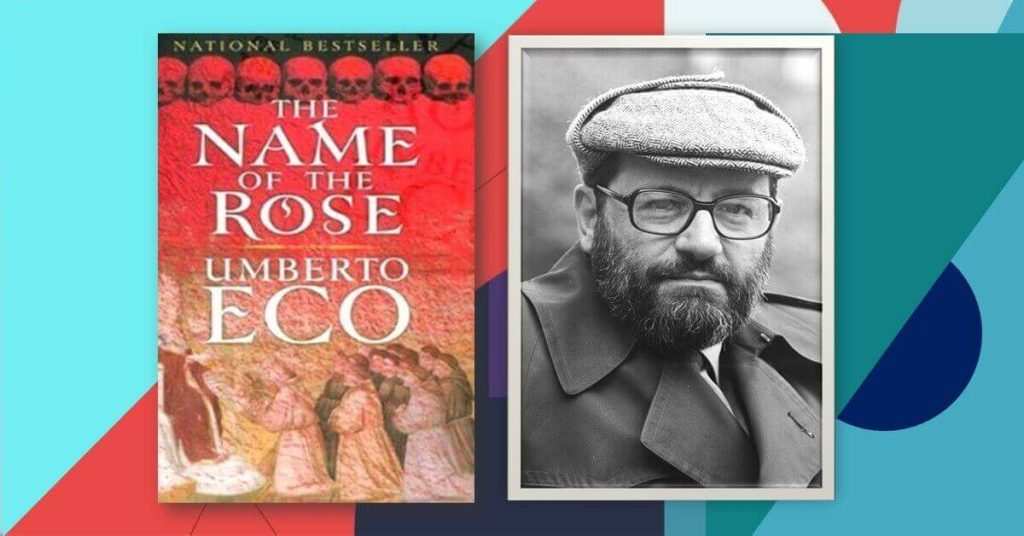The Genetic Book of the Dead by Richard Dawkins delves into the idea that every living organism carries within it a detailed historical record of its ancestors’ environments and evolutionary adaptations.
Dawkins argues that by studying an organism’s physical traits, behaviour, and genetic code, we can uncover the story of the past environments in which its ancestors lived and survived. This concept of organisms being a “genetic book of the dead” implies that their bodies are shaped not only by current environmental pressures but also by historical ones, with natural selection sculpting species over millions of years.
Dawkins expands on key evolutionary concepts such as adaptation, reverse engineering of traits, and convergent evolution.
He explains how organisms evolve traits that allow them to survive specific environmental challenges, often through processes like natural selection and genetic mutation.
Furthermore, he introduces the idea of pleiotropy (one gene influencing multiple traits) and explores how certain evolutionary adaptations, such as cancer within the body, mimic Darwinian competition and survival at the cellular level. Throughout the book, Dawkins emphasizes how evolution is not about perfection but about organisms being “good enough” to survive in their respective environments, working within the constraints of their historical lineage.
The book also explores cultural evolution, particularly in humans, and how non-genetic factors like learning and meme transmission influence behaviour and survival.
Dawkins touches on themes such as how learned behaviours can become genetically assimilated over time and how traits that arise through social or environmental influences can shape the course of evolution. His broader message is that the evolutionary process is a continuous, unbroken narrative, with each organism being a living testament to the adaptations and environments of its ancestors.
20 Key Points From Richard Dawkins’ The Genetic Book of the Dead.
1. The Genetic Book of the Dead: A Living Archive
Dawkins presents the idea that every living organism carries within it the evolutionary story of its ancestors.
This is metaphorically referred to as a “book of the dead” because the traits and characteristics of organisms are shaped by environments and challenges faced by their predecessors, who are long gone. These organisms encapsulate a history of survival, from the ancient seas to modern ecosystems, through millions of years of evolutionary changes.
By examining living species, we can decipher these histories, making animals and plants into a living archive of past environments.
Each animal’s body can be “read” as a historical record. For example, the wings of birds tell a story of flight, and the opposable thumbs of primates speak of the importance of tool use and dexterity in their evolutionary past. The concept emphasizes how animals today are survival machines, refined by the relentless pressures of natural selection in the environments of the past.
Evolution leaves a trail in their anatomy, behaviour, and genetic material.
2. Adaptation as Reverse Engineering
Dawkins suggests that scientists can reverse engineer an organism by examining its traits, inferring what environmental challenges it has faced in the past. For example, studying the structure of a polar bear’s fur, fat layers, and sharp claws tells us about the cold, icy environment where it evolved and the type of prey it hunted.
Reverse engineering is key to understanding evolution.
Just as engineers can study a machine to understand how it works, biologists can examine a creature’s traits to understand what evolutionary pressures shaped it.
A cheetah’s speed, for instance, is an adaptation for hunting fast prey in open savannahs, while the slow, deliberate movement of a sloth reflects a survival strategy in dense forests where stealth is more important than speed.
3. Learning and Culture in Evolution
Though much of evolution occurs through genetic changes, Dawkins touches on the idea of cultural evolution—how learned behaviours are passed from generation to generation.
Some animals, like primates, pass down knowledge through imitation and teaching, creating a form of non-genetic inheritance. This form of transmission is faster than genetic evolution because it doesn’t require changes in DNA but in behaviour.
Cultural evolution can drive rapid changes in behaviour.
For example, orcas have been observed teaching their young to hunt seals in specific ways, and this learned knowledge becomes part of their group’s survival strategy. Dawkins contrasts this with genetic inheritance, which is slower and relies on mutations and natural selection.
In humans, cultural transmission has led to rapid advances, particularly in technology and societal structures.
4. Imprinting and Memory in Animals
Imprinting, such as in baby ducks or geese, is a phenomenon where an animal forms attachments early in life.
This behaviour is an evolutionary adaptation that ensures young animals stay close to their parents for protection. Beyond imprinting, Dawkins explores how organisms’ bodies and immune systems also “learn” from past encounters with diseases, which is akin to a biological memory of environmental challenges.
Imprinting ensures survival by quickly bonding young animals with their caretakers, often their mothers, who provide protection and food.
Beyond this, immune system memory—such as how humans develop immunity to certain diseases after exposure—is another form of evolutionary learning. The immune system retains information about pathogens it encounters, enabling faster and more efficient responses to future infections.
5. Immune System as a Genetic Memory
The immune system is one of the clearest examples of how organisms adapt to their environments through memory.
When a pathogen invades, the immune system remembers it and can fight it off more efficiently in future encounters. This process is an evolutionary advantage because it enables quicker responses to known threats, allowing the organism to survive future exposures.
The immune system’s memory is not genetic in the traditional sense, but it still represents a form of adaptation.
For example, vaccinations work by exposing the immune system to a harmless form of a pathogen, allowing it to “learn” how to defend against the actual disease. This principle highlights the body’s ability to adapt based on previous encounters, a vital component of an organism’s survival machinery.
6. Pleiotropy and Genetic Interaction
Pleiotropy occurs when a single gene influences multiple traits.
Dawkins explains how evolution is not always a straightforward process where one gene controls one trait; instead, genes interact with each other in complex ways. This interaction creates a network where a mutation in one gene can affect multiple traits, complicating the process of adaptation.
For example, a gene mutation that improves muscle growth might also affect metabolic rate, creating a trade-off between strength and energy consumption.
This interconnection of traits means that evolution must work with many competing interests within the organism, balancing benefits in one area with costs in another. Evolution often results in compromises because changing one part of the genetic code can have ripple effects throughout the organism.
7. Cancers as Darwinian Evolution Within the Body
Dawkins draws a parallel between cancer and Darwinian evolution.
Cancer cells evolve rapidly within the body, undergoing mutations that allow them to evade the body’s defences and spread. Just like species in the wild, cancer cells compete for resources and survival, following the same evolutionary principles of variation, selection, and inheritance.
In this case, the “environment” is the body itself, and cancer cells that mutate to grow faster or resist treatment have a better chance of surviving and proliferating. This micro-evolution within the body illustrates how Darwinian processes are at work even at the cellular level.
Cancer therapy, therefore, can be seen as an ongoing evolutionary arms race, where treatment must adapt to ever-changing cancer cells.
8. The Role of Constraints in Evolution
Evolution is not a perfect process because it works with pre-existing structures and is limited by historical constraints.
For instance, the human spine, originally designed for walking on all fours, causes problems like back pain in modern humans who walk upright. Evolutionary adaptations are often compromises, and many traits we have today are shaped by the “baggage” of our ancestors.
Evolution must work with the materials available.
For example, the vertebrate eye has a “backward” design where nerve fibres cover the retina, creating a blind spot. This design is a historical consequence of how vertebrate eyes evolved, and even though it is inefficient, evolution cannot easily “start from scratch” to correct it.
Dawkins emphasizes that these evolutionary constraints lead to organisms that are “good enough” rather than perfect.
9. The Power of Convergent Evolution
Convergent evolution occurs when different species develop similar traits independently because they face similar environmental pressures.
Dawkins provides examples like the development of wings in both birds and bats or the streamlined bodies of dolphins and ichthyosaurs (extinct marine reptiles). These similarities arise not from common ancestry but from common solutions to similar problems.
Convergent evolution demonstrates that natural selection often finds similar solutions to life’s challenges.
For example, both sharks and dolphins have streamlined bodies for swimming, despite being separated by millions of years of evolutionary history. This convergence shows how predictable natural selection can be when similar environmental pressures are at play.
10. Reverse Engineering Fossil Records
Palaeontologists use fossil evidence to reverse engineer ancient species, reconstructing not only their physical form but also their behaviour and environment.
Teeth, for example, can reveal an animal’s diet, while limb bones show whether a species walked, climbed, or swam. This process allows scientists to “read” the past environments in which these species lived, similar to how we can “read” living organisms today.
Fossils provide a window into the past, allowing scientists to infer what life was like millions of years ago. For instance, the structure of a dinosaur’s leg bones can reveal whether it was a fast runner or a slow grazer.
Fossils give us clues about the ecosystem, the climate, and even the interactions between species, helping us piece together the story of life on Earth.
11. Nidifugous and Nidicolous Species
Dawkins introduces the concepts of nidifugous (species that are relatively independent soon after birth) and nidicolous (species that are born helpless and require extended parental care).
Humans are extremely nidicolous species because our large brains and prolonged childhoods require years of learning and development before we can function independently.
These strategies reflect different evolutionary pressures.
Nidifugous species, like ducks or some reptiles, are born ready to move and fend for themselves because immediate mobility increases their chances of survival in a dangerous environment. On the other hand, nidicolous species, like humans and birds of prey, invest heavily in parental care to ensure the young develop fully before venturing out on their own.
12. Reading Animal Behavior Through Evolution
Many animal behaviours are shaped by evolutionary pressures.
For instance, predator-prey dynamics often lead to behaviours like camouflage, mimicry, or distraction techniques, all of which improve an animal’s chances of survival. Dawkins highlights how even social behaviours, such as group hunting or altruism, have evolved because they offer advantages in specific environments.
Animal behaviour can be seen as a set of survival strategies shaped by evolution.
For example, meerkats stand guard while others forage, a behaviour that increases the group’s survival chances. Evolution also shapes mating behaviours, from elaborate bird dances to territorial displays in mammals.
These behaviours are adaptations that have evolved to maximize reproductive success in specific environments.
13. The Role of Historical Contingency
Historical contingency refers to the idea that evolution is not always about optimal solutions, but rather what happens to work given an organism’s history. For example, humans have a vestigial appendix, which once helped digest cellulose-rich diets but is now largely unnecessary.
Evolution doesn’t erase old traits easily—it builds on them.
Evolution is a tinkerer, not an engineer. Some traits that were once useful can become obsolete, but they persist because they don’t interfere with survival or reproduction. For instance, whales have vestigial pelvic bones, remnants from when their ancestors walked on land.
While these structures no longer serve their original purpose, they remain as evolutionary leftovers.
14. The Immortal Gene
Dawkins revisits the concept of the “immortal gene,” explaining that individual organisms die, but their genes live on through their offspring.
The survival of genes is the primary goal of evolution. The term “immortal” refers to the idea that while individuals are temporary, the genetic information they carry can be passed down for countless generations.
The concept of the immortal gene underscores the central role of reproduction in evolution. The persistence of genes over time depends on their ability to be passed on, generation after generation.
This process leads to the accumulation of beneficial traits within a population, ensuring that successful genes are preserved, while less advantageous ones are phased out.
15. Ecological Niches and Adaptive Radiation
Adaptive radiation is the process by which a single species evolves into multiple different species, each adapted to a specific ecological niche.
Dawkins highlights famous examples, like Darwin’s finches in the Galápagos Islands, which evolved different beak shapes to exploit different food sources. This diversification is a direct response to environmental pressures.
Adaptive radiation often occurs when a species colonizes a new environment with many unoccupied niches. Over time, the population diverges into new species, each adapted to a specific niche. This process allows for a rapid increase in biodiversity.
For example, after the mass extinction of the dinosaurs, mammals underwent adaptive radiation, evolving into many forms to fill the vacant ecological roles.
16. Cultural Evolution and Genetic Assimilation
Dawkins discusses how behaviours that are initially learned can eventually become encoded in an organism’s genes through a process called genetic assimilation.
For instance, a behaviour that is advantageous might be passed down genetically if it consistently enhances survival. Over time, this behaviour becomes an innate part of the species’ biology.
Genetic assimilation bridges the gap between learned behaviour and genetic evolution. A famous example is the domestication of dogs, where humans initially selected for tameness.
Over generations, the tameness trait became genetically embedded in dog populations, turning a learned behaviour into a fixed genetic trait.
This process illustrates how cultural practices can shape genetic evolution.
17. The Impact of Memes on Human Evolution
Dawkins’ concept of the meme—a unit of cultural transmission—is central to his argument about cultural evolution.
Memes, like genes, replicate, mutate, and are subject to selection pressures. Ideas, beliefs, and customs that are more successful spread through populations, shaping human behaviour and society.
In modern society, memes spread rapidly through communication, media, and social interactions. Memes that are catchy, useful, or emotionally resonant tend to be replicated more, just like genes that confer survival advantages.
For example, the spread of technological innovations like the internet or the development of language have significantly shaped human evolution and social structures.
18. Constraints of Perfection in Evolution
Dawkins argues that while natural selection optimizes organisms for survival, it does not create perfection. Evolution works with available genetic material and is limited by the organism’s history. As a result, many traits are “good enough” for survival but far from perfect.
This constraint is why we have suboptimal structures, like the human spine, which is prone to injury.
Natural selection is constrained by physical and genetic limitations.
For instance, giraffes have long necks to reach tall trees, but the nerve connecting their brain to their larynx loops down their neck and back up—a result of evolutionary constraints rather than optimal design.
These imperfections arise because evolution must build on existing structures rather than starting from scratch.
19. Nature’s Trade-Offs
Every evolutionary adaptation involves trade-offs.
For example, an animal that evolves stronger muscles may sacrifice speed or flexibility.
Dawkins emphasizes that evolution balances competing needs, leading to organisms that are a compromise between various factors like strength, speed, size, and reproduction.
Trade-offs are essential in understanding evolutionary adaptations.
For example, peacocks have large, colourful tails to attract mates, but these tails make them more vulnerable to predators. Similarly, animals with long lifespans may reproduce more slowly, while those with short lifespans reproduce quickly to ensure their genes are passed on before they die.
These trade-offs shape the diversity of life.
20. Predicting the Future with Evolution
Dawkins concludes that while organisms are shaped by their past, evolution also prepares them for the future. Genes that have helped ancestors survive are likely to continue being beneficial if the environment remains stable.
However, if the environment changes drastically, the traits that were once advantageous may become liabilities, leading to natural selection favouring new traits.
Evolution is fundamentally about prediction.
The traits that help an organism survive in its current environment are based on the assumption that the future will be similar to the past. When environments change rapidly, such as through climate change or human intervention, organisms must either adapt or face extinction.
This forward-looking aspect of evolution highlights the dynamic nature of natural selection.
Conclusion
The Genetic Book of the Dead offers a deep and thought-provoking dive into the mechanisms of evolution and how every living being is a reflection of its genetic past.
Dawkins masterfully blends biology, history, and philosophy to explain how life, in all its forms, is a complex, ongoing story of adaptation.
About the Author
Richard Dawkins is a renowned evolutionary biologist and author, best known for his popularization of evolutionary theory and his ability to communicate complex scientific ideas to a general audience.
Born in Nairobi, Kenya, in 1941, Dawkins developed an early interest in the natural world, eventually earning a degree in zoology from Balliol College, Oxford. He later completed his doctorate under the supervision of Nobel Prize-winning ethologist Nikolaas Tinbergen, which shaped his career as both a scientist and a writer.
His first major work, The Selfish Gene (1976), introduced the groundbreaking idea that genes, not individuals or species, are the primary units of selection in evolution. This book marked the beginning of Dawkins’ career as a leading figure in evolutionary biology and science communication.
Dawkins has written numerous influential books on science, evolution, and atheism. His book The Blind Watchmaker (1986) further established his reputation as a skilled communicator of Darwinian principles, arguing against the notion of intelligent design and advocating for the power of natural selection to explain the complexity of life.
The God Delusion (2006), one of his most controversial works, made him a prominent figure in the atheist movement, challenging religious beliefs and promoting secularism. His clear, engaging writing style has garnered both acclaim and criticism, positioning him as a key voice in debates on science, religion, and philosophy.
Throughout his career, Dawkins has been honoured with numerous awards for his contributions to science and literature, including the Nierenberg Prize for Science in the Public Interest and the Royal Society of Literature Award.
He is also a Fellow of the Royal Society and an Emeritus Fellow of New College, Oxford. Beyond his writing, Dawkins has been involved in various public debates, lectures, and documentaries, using his platform to advocate for rationalism, skepticism, and a deeper understanding of evolutionary science.






